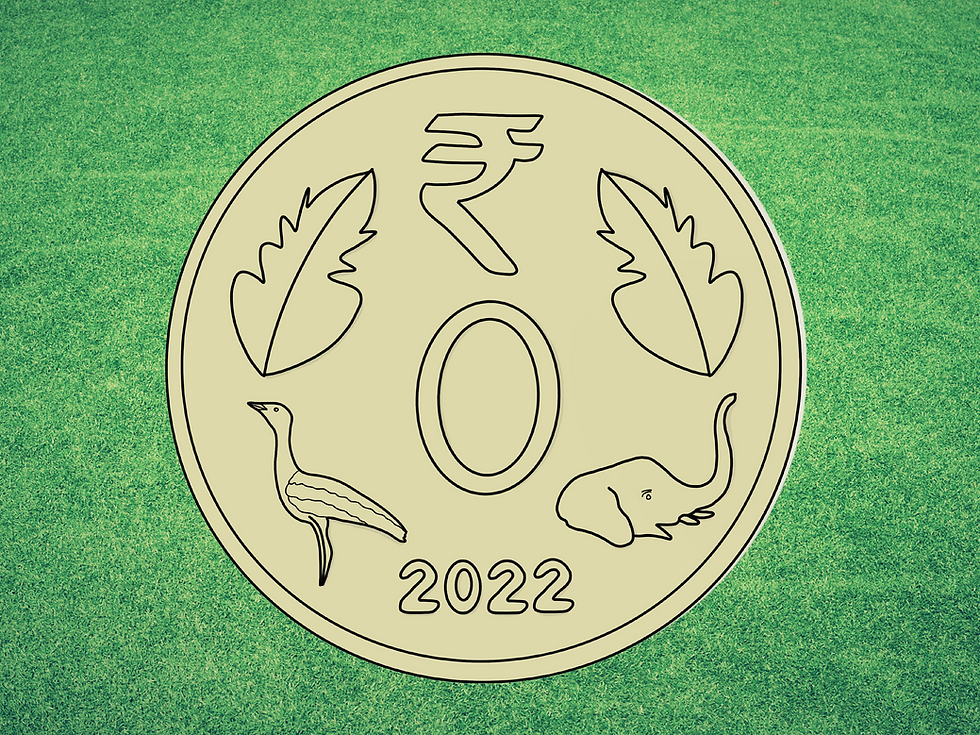Investing Beyond the Concrete Jungle
- Czai Maluja

- Mar 3, 2022
- 3 min read
Updated: Jun 14, 2023
Wildlife conservation is broken, and the distribution of funds is broken.

Important species around the globe are becoming non-existent and critically endangered due to human activities. The loss of biodiversity is threatening our planet, disrupting our ecosystems and moving us to eternal gloom. This is why this World Wildlife Day the agenda of "Recovering key species for ecosystem restoration" has been taken up. Recognizing the horrifying trend in the past years, the agenda seeks to push a focused effort towards wildlife conservation. So, what makes a conservation effort successful? A strong action plan and sound monetary investment. However, wildlife conservation is poorly funded and rarely discussed in the global community.
Wildlife conservation efforts are primarily funded by governments through federal budgets, state funds, local funds, legislation, forest grants, and government funds. Acts like protecting a certain percentage of wildlife areas and species-centred programmes utilize these allocated public funds. In India, The MoEF (Ministry of environment, forest and climate change) had been allocated a total of Rs 3100.00 crore under the Union Budget for the Financial Year 2020-21.
Under this budget, the scheme 'Integrated Development of Wildlife Habitats' focussed towards wildlife conservation had been allocated Rs. 532 crores out of which only Rs. 247.93 crore funds were used. While a large percentage goes into maintaining forests, protected areas, and services under this funding, very less is left for the implementation of 'wildlife' conservation efforts. These funds are also used heavily in a few programmes such as Project Tiger (released Rs 179.7 crore) and Project Elephant (released Rs 1.32 crore). Other endangered species in need of help like the Great Indian Bustard and the Indian wolf do not come into the limelight.
(Also Read: A Brief History: Project Tiger)
Under the Companies Act 2013, along with Company's corporate social responsibility policy rules, many companies fund wildlife conservation as well. One of the most impactful funding efforts has been Muthoot Group's collaboration with WWF-India for elephant protection. The company has invested 75,000 USD as of 2019, especially for the training of anti-depredation squads, solar fences in villages and infrared motion sensors to manage human-elephant conflicts. Philanthropic trusts, loans, NGOs, and grants on the other hand work to create a small impact in local scenarios.
The current status of funding in India points out the lack of private investments and poor implementation of allocated funds. Monitoring and impact measurement through new technology can open up many opportunities for the growth and development of conservation efforts. Innovative financing efforts like the 'Rhino Bond' started by the Zoological Society of London in 2019 can also be adopted as strategies. First, of its kind, this green bond aims to raise funds for the population of endangered black rhinoceros in South Africa. It has enabled accountability and re-investment efforts by giving a return on investment to investors based on the rate of population growth in two South African reserves.
Besides this, emphasis on a grassroots approach to investing in wildlife conservation is a must. For example, a study from Nepal highlights the intersectional nature of the illegal wildlife trade. Individuals who had committed illegal wildlife trade offences in Nepal were interviewed under the study with a special focus on trade practices, economic circumstances and motivations. Paul K. et al. (2019) found “Most were poor (56%) and from indigenous communities (75%), highlighting potentially inequitable impacts of enforcement…. Respondents, particularly poor respondents, seemed to underestimate the risks of detection and incompletely understood the scale of sanctions.” Trade of elephants and owning elephants at the local level in India display similar issues among people.
Outcome-based payment models of investment like the 'Rhino Bond', grassroots financing, attention towards multiple keystone species, private involvement, and increasing awareness of the role of wildlife protection have the potential to create powerful funding opportunities. Wildlife funding is a lifeline for endangered species. These responsible investment mechanisms beyond the concrete jungle can restore ecosystems in India.
(Also Read: The Red Flags of Green Investment)
References
Kukriti, I. (2020, February 1). Union Budget 2020-21: Big chunk goes to tigers and elephants. Down to Earth.
Fernandes, K. (2019, December 26).Top CSR Projects for Animals in India. The CSR Journal.
Ministry of Environment, Forests and Climate Change. (2021) Annual Report 2020-21.
Aglionby, J. (2019, November 25). How conservation investment could be a lifeline for endangered species. Financial Times.
Paudel, K, Potter, GR, Phelps, J. Conservation enforcement: Insights from people incarcerated for wildlife crimes in Nepal. Conservation Science and Practice. 2020; 2:e137.
Sguazzin, A. (2021, March 24). World’s First Wildlife Bond to Track Rhino Numbers in Africa. Bloomberg Green.



Comments